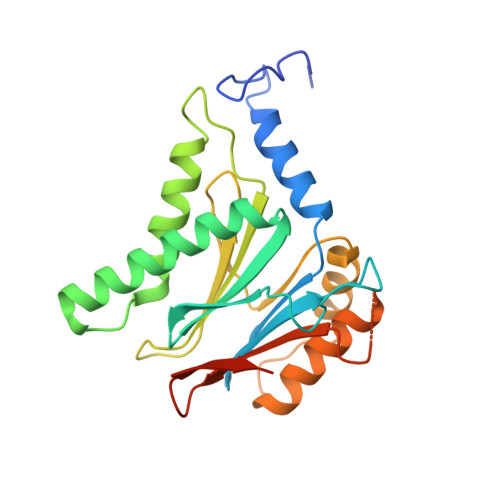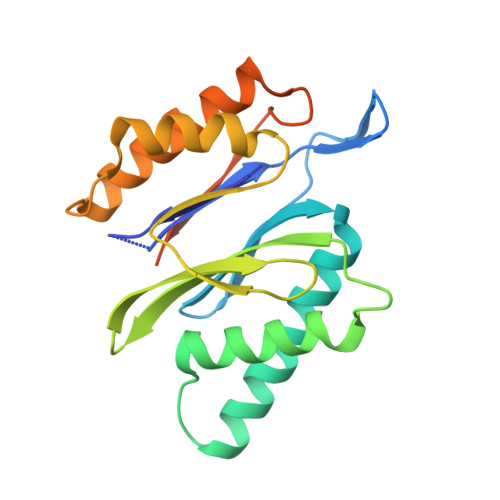The proteasome controls ESCRT-III-mediated cell division in an archaeon.
Tarrason Risa, G., Hurtig, F., Bray, S., Hafner, A.E., Harker-Kirschneck, L., Faull, P., Davis, C., Papatziamou, D., Mutavchiev, D.R., Fan, C., Meneguello, L., Arashiro Pulschen, A., Dey, G., Culley, S., Kilkenny, M., Souza, D.P., Pellegrini, L., de Bruin, R.A.M., Henriques, R., Snijders, A.P., Saric, A., Lindas, A.C., Robinson, N.P., Baum, B.(2020) Science 369
- PubMed: 32764038
- DOI: https://doi.org/10.1126/science.aaz2532
- Primary Citation of Related Structures:
6Z46 - PubMed Abstract:
Sulfolobus acidocaldarius is the closest experimentally tractable archaeal relative of eukaryotes and, despite lacking obvious cyclin-dependent kinase and cyclin homologs, has an ordered eukaryote-like cell cycle with distinct phases of DNA replication and division. Here, in exploring the mechanism of cell division in S. acidocaldarius , we identify a role for the archaeal proteasome in regulating the transition from the end of one cell cycle to the beginning of the next. Further, we identify the archaeal ESCRT-III homolog, CdvB, as a key target of the proteasome and show that its degradation triggers division by allowing constriction of the CdvB1:CdvB2 ESCRT-III division ring. These findings offer a minimal mechanism for ESCRT-III-mediated membrane remodeling and point to a conserved role for the proteasome in eukaryotic and archaeal cell cycle control.
Organizational Affiliation:
MRC-Laboratory for Molecular Cell Biology, University College London (UCL), London, UK.















